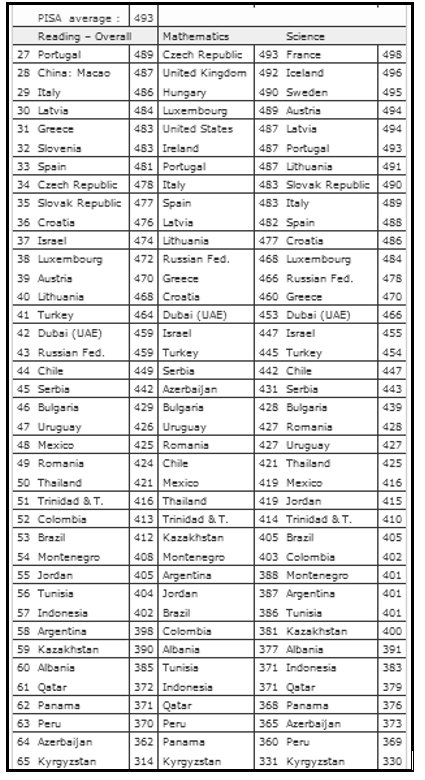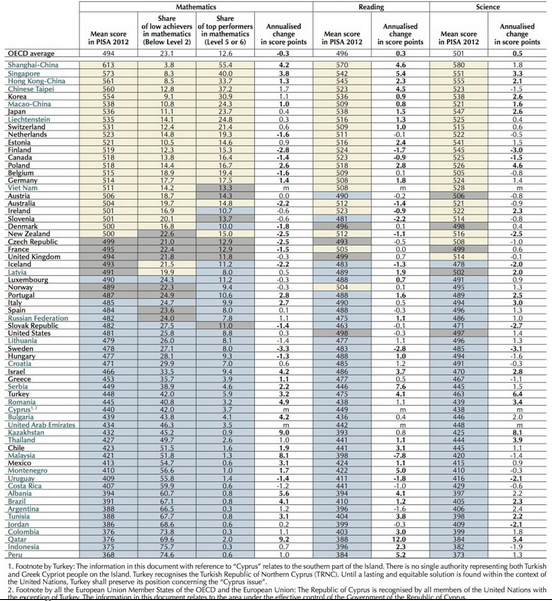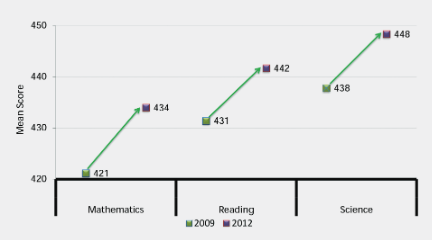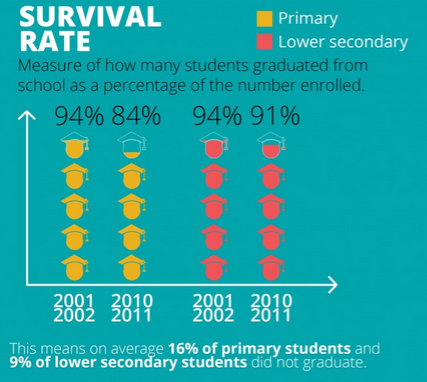Education in the country is traditionally considered as an important criterion to discuss the state’s progress. In the UAE, the history of the education system is rather distinct, and it includes periods of informal and formal education. Years ago, the traditional education in the UAE differed significantly from the current pattern in terms of formalism and systematization. Children were usually taught by teachers known as “mutawwa” and studied the Holy Quran texts.
These teachers were discussed as authorities in different subjects. Later, scientists and scholars became united in “circles” to exchange knowledge. However, the educational system similar to the modern one appeared only in the 1900s, when the first schools were opened in cities. In 1953, the first formal school with the curriculum and standards was opened in the UAE to proclaim the era of modern education (The UAE Ministry of Education, 2015).
Therefore, the changes in the tradition of education in the country were significant, and this fact caused certain problems. Depending on the comparably short history of developing its formal type, today the education in the UAE is associated with a range of challenges that are important to be discussed in detail in order to focus on improvements (Emirates Centre for Strategic Studies and Research, 2012, p. 12). Thus, the following research question needs are answered in the paper: What are the educational challenges in the UAE? It is possible to state that the most significant challenges include quality of education, low levels of literacy in English, teacher competency, teacher turnover rate, and student dropout rate. This paper aims to present the discussion of the educational challenges in the UAE, depending on the review of the primary and secondary sources and to provide a comparison of the education systems in the UAE and Norway.
The Methodology Used for Identifying Challenges
In order to identify challenges in the educational system of the UAE and propose effective recommendations, it is significant to focus on reviewing both primary and secondary sources. The reports of the UAE Ministry of Education, the reports of the Programme for International Student Assessment (PISA) promoted by the Organisation for Economic Co-operation and Development (OECD), and the national statistical data on the sphere of education in the UAE were reviewed as primary sources. Much attention was also paid to the scholar articles in order to conclude about the nature of challenges and to the articles published online in order to examine the current trends in the UAE education.
Challenges in the Educational System of the UAE
In spite of the fact that the population in the UAE demonstrates high literacy rates and the numbers related to enrolment in primary and secondary schools increased, there are several challenges in the educational sphere of the UAE that need to be examined in detail with the support of the statistical data.
Quality of Education
In the UAE, education was always discussed as the priority in the social development of the state, but the aspect of educational quality still remains a challenge. According to the assessments conducted by the PISA, the scores of students from the UAE in mathematics and science are usually below average (The UAE Ministry of Education, 2013b, p. 8). In 2009, the UAE students were ranked 41st in science and mathematics (Table 1). In 2012, the UAE students were also scored below average, and they were ranked 48th in mathematics and 46th in science out of a total of 65 countries (The UAE Ministry of Education, 2013a, p. 4; Table 2).


In the report on the 2012 PISA results, the Ministry of Education in the UAE focused on small improvements observed in test results for 2012 in comparison with the results for 2009 in terms of scores that increased in several points for mathematical literacy, English literacy, and science (The UAE Ministry of Education, 2013b, p. 9; Figure 1).

In spite of observed positive changes, the quality of education in the UAE is still a challenge because slight alternations in the UAE education are not correlated with the progress of the other countries in this sphere (Pennington, 2014). Although the literacy skills and the overall quality of education in the UAE are ranked higher than in such countries as Qatar, Jordan, and Tunisia, only 49% of the UAE students demonstrate developed skills in mathematics, only 61% demonstrate proficiency in science, and only 60% of students are proficient in reading in comparison with 82% typical for the OECD countries, according to the data of 2012 (The UAE Ministry of Education, 2015).
Development of Skills in the English Language
The English language literacy is assessed in the population of the UAE during a comparably short period of time, but the development of English skills is discussed as an important factor for increasing the overall literacy of the students in the UAE because of the state’s orientation to the active use of English in educational, social, and economic spheres (Gallagher, 2011, p. 63). According to the PISA, the results of the students from the UAE in English reading tend to decrease in comparison with the results in the other OECD countries. Thus, the PISA assessment in 2009 demonstrated that the students’ achievements in English reading were below the international standards for 15-year-old students from the UAE, and they were ranked 42nd in English reading out of a total of 65 countries participating in the assessment (Table 1).
The PISA assessment of 2012 demonstrated that the results worsened, and the students’ skills in reading were ranked 44th out of a total of 65 countries (Table 2). These results demonstrate that students in the UAE have poorly developed skills in English, and it is a real challenge for the country where English is actively used in all spheres of social and economic life.
Problems with Teachers’ Competency
The other important problem observed in the educational sphere of the UAE is the quality of teaching. In spite of the fact that the UAE is among the leading world countries in terms of the economic and social development, the teachers’ competency is a problem in the state because many teachers prefer to use traditional educational practices, out-of-date teaching methods, and reject the use of technology in the educational settings because of lack of skills in using computers and other devices (Chapmana, Austinb, & Farahc, 2014, p. 132).
To guarantee the development of systematic education in the UAE, the Ministry of Education supported practices including the hiring of expatriates along with nationals in order to work in public and private schools of the state. During the period of the formation of the national education system, there was a lack of teachers in the UAE, and the government followed the practice of hiring professionals from Egypt, Syria, and Palestine (The UAE Ministry of Education, 2015).
This tradition is also followed today, creating the problem of impossibility to set appropriate standards for evaluating the qualification of teachers who received education in foreign countries. To be qualified for the job at school, nationals and expatriates need to acquire the certificate, but the experts point at the minimal qualifications necessary to receive such a certificate (Chapmana et al., 2014).
Although the government funds the sphere of education appropriately, more attention should be paid to the quality of teachers’ education because the focus on implementation of technologies at schools leads to revealing the following numbers: 45% of teachers report problems with using technologies at lessons; 56% of teachers prefer using traditional instructions, memorization, and explanation; only 34% of teachers feel confident while using innovative technologies at lesson and use the experimental and laboratory work in class settings (The UAE Ministry of Education, 2015). As a result, it is possible to speak about the poor quality of instruction and about the overall low teachers’ competency.
Teachers’ Turnover Rate
The problem associated with the quality of teaching and learning is the teachers’ turnover rate. Thus, the UAE has one of the lowest student-to-teacher ratios among the developed countries, and it is 15:1 (Madsen & Cook, 2010, p. 128). The causes of the problem area in focus on expatriates as the workforce in education. Thus, the turnover rate in the UAE can reach 60% in different schools, and it is associated with the turnover of expatriates (Gaad, Arif, & Scott, 2006, p. 292). Only 38% of teachers are nationals working in the schools of Dubai, and the turnover rate among the expatriates is about 56% (The UAE Ministry of Education, 2015). The authorities aim to address this problem while improving the contract terms and conditions for the expatriates and while developing programs aiming to achieve the 90% of nationals among teachers in schools of the UAE by 2020 (The UAE Ministry of Education, 2015).
Student Dropout Rates
In the UAE, the dropout rate is high among male students studying in secondary school. According to statistics reported by Swan for 2011, about 15% of boys in the UAE choose to drop out of secondary school, and almost a quarter of the male population aged 20-24 is school dropouts (Swan, 2014). As a result, the rates of males entering university are rather low. This problem is closely associated with the problem of literacy in the Arab and English languages because dropouts usually demonstrate the poor level of skills in English. Referring to the data for 2001-2011, the problem is typical for both primary and secondary schools.
Thus, only 84% of students graduated from primary school in 2011 in comparison with 94% in 2002, and only 91% of students graduated from the lower secondary school in 2011 in comparison with 94% in 2002 (Ayson, 2014; Figure 2). In order to overcome the challenge, it is important to propose policies to address the motivation of young Emiratis and increase the graduation rates for the students in the UAE.

Comparison of the Education Systems in UAE and Norway
While comparing education in the UAE with the educational system in any other developed country, it is important to focus on approaches that are used by these countries in order to address the identified challenges. According to the PISA numbers for 2012, Norway is among the countries that demonstrate above-average scores in mathematics, literacy, and science. Thus, according to the 2012 PISA results, the score of Norwegian students was 489 in mathematics, 504 in reading, and 495 in science (Table 1, Table 2).
In spite of the fact that the UAE authorities’ investments into education are higher than it is in Norway, the differences affecting the quality of education are based on spending priorities determined by authorities. In Norway, to address the challenge of the teacher turnover, the authorities propose increased wages for those ones working at schools with a large number of minority students and students with special needs (Education in Norway, 2015). Furthermore, more attention is paid to developing social programs for students to minimize dropout rates. As a result, the student dropout rate and teacher turnover rate are minimal in comparison with the situation in the UAE.
However, teacher competence is a problem that is also typical for Norway because today, the certification system is reformed, and minimum requirements for teacher training are proposed. This fact influences the level of teacher competence significantly. As it is in the UAE, the authorities are concerned with the number of resources invested in education and observed results related to students’ learning outcomes and skills (The UAE Ministry of Education, 2015). Therefore, both countries work to develop policies oriented to increasing the literacy rates and scores according to the international standards and oriented to monitoring the teaching competence.
Conclusion
In spite of the fact that the educational system in the UAE faces a range of challenges associated with the quality of teaching, professionals’ competence, turnover rates, and student dropout rates, the real causes of the problems are in ineffective programmes and policies developed by the Ministry of Education in order to standardise and monitor the quality education. Thus, the problem is in the fact that there is still no appropriate accreditation system for educational institutions and certification systems for professionals in order to guarantee that all educational institutions follow the modern curricula, implement new strategies, and integrate innovation in the teaching process.
In addition, it is important to guarantee that all teachers are trained and hired based on the unified certification procedure in order to increase the quality of teaching and address the problem of low competence. The focus on expatriates in teaching should be changed in order to decrease the teacher turnover rate. The student dropout rates will decrease if the cooperation between educators, social workers, and parents is enhanced in different emirates and regions of the UAE.
It is also important to state that the Ministry of Education in the UAE has the opportunity to use significant financial resources in order to improve the situation in the sphere of education. As a result, it is possible to recommend paying more attention to defining the expected outcomes clearly while developing educational programs and curricula. The outcomes-based framework is important to improve the quality of teaching and to learn in the UAE. The other recommended strategy is the focus on increasing responsibility for school authorities and teachers for low literacy rates because focusing on out-of-date curricula and inappropriate objectives, the educational leaders cannot achieve high results in the sphere of students’ literacy.
References
Ayson, T. (2014). Discussing public education in the UAE. Web.
Chapmana, D., Austinb, A., & Farahc, S. (2014). Academic Staff in the UAE: Unsettled Journey. Higher Education Policy, 27(1), 131–151. Web.
Education in Norway. (2015). Web.
Emirates Centre for Strategic Studies and Research. (2012). Education in the UAE: Current status and future developments. Abu Dhabi: I. B. Tauris. Web.
Gaad, E., Arif, M., & Scott, F. (2006). Systems analysis of the UAE education system. International Journal of Educational Management, 20(4), 291-303. Web.
Gallagher, K. (2011). Bilingual education in the UAE: factors, variables and critical questions. Education, Business and Society: Contemporary Middle Eastern Issues, 4(1), 62-79. Web.
Madsen, S., & Cook, B. (2010). Transformative learning: UAE, women, and higher education. Journal of Global Responsibility, 1(1), 127-148. Web.
Pennington, R. (2014). Quality is the biggest challenge facing UAE’s education. Web.
Swan, M. (2014). School dropout problem keeps Emiratisation from fully succeeding. Web.
The UAE Ministry of Education. (2013a). PISA 2012 results preparedness for life: Skills at age 15 in the UAE. Web.
The UAE Ministry of Education. (2013b). The UAE education system: Overview of performance in education. Abu Dhabi: National Qualifications Authority.
The UAE Ministry of Education. (2015). Web.